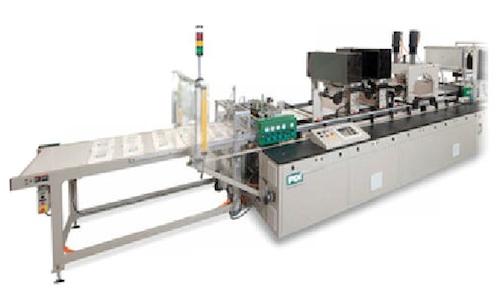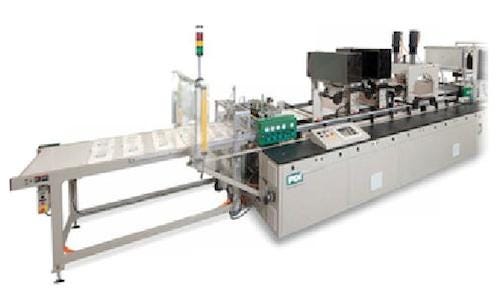August 29, 2014

A medical pouching machine converts premade medical header bags and shaped pouches to exacting industry specifications at a rate of nearly 200 seals per minute using advanced automation controls. Precise control technology and rapid data management offers high precision for effective pouch converting for medical applications.
Key capabilities of the new system include support for real-time changes to sealing temperature, pressure, and dwell time, along with total management of real-time data for accurate adjustments. Recipe-based seal parameters help machine operators control complex variables to achieve better sealer force positioning accuracy and precision, along with enabling faster switchover between jobs.
Converting of medical packaging
For more than 30 years, CMD Corporation has designed and manufactured high-performance converting equipment for products from sturdy trash bags to produce bags. One of its most specialized and impressive systems is the PDI Medical Combination Pouch System, which converts a complete range of premade medical header bags and shaped pouches in a chevron or shaped seal configuration. The machine presses pieces of poly material together at specific temperatures for precisely determined lengths of time (dwell time) and with a downward sealing stroke 3-150 mm in length. Pouch sealing can be done in single or multiple lanes across the width of the machine at high speeds.

Increasingly stringent medical regulatory requirements are demanding not only quality pouches, but also complete specification and sealing data for documenting processes. Each seal has to be virtually perfect. To stay ahead of its competition, CMD needed to offer unique advantages: real-time process monitoring, complete data management, and controlling of all sealing parameters, primarily temperature, pressure, and dwell time. That would produce better weld quality and precision, optimum consistency and compliance with demanding specifications, and tighter control with fewer discrete components to monitor.
Implementing this concept would require basing machine control on actual data points, not just filtered or averaged data. Users would be able to optimize seal parameters whenever needed. Instant analysis of high-volume data was a must, because machine operators needed to know immediately if platen heat was uneven or dwell times a split second too short, requiring processes to be changed or shut down. High levels of accuracy and precision had to be maintained consistently across thousands of seals. CMD customers also needed minimal changeover times between jobs as production demanded.
Meeting these requirements would mean the new generation PDI pouch converting systems would need to be designed with controls to give CMD a performance advantage in this demanding market. Data management improvements required giving the pouch manufacturer more complete control over sealing parameters. CMD worked with the machine components distributor CMA/Flodyne/Hydradyne and the automation controls supplier Bosch Rexroth for drive and control components, engineering support, and machine logic control programming assistance.
Recipe-based programming
Data is interpreted instantly and converted into a set of sealing parameters called a "recipe" for creating the seal. Recipe-based programming at the operator panel ensures precise control of customer-specific converting requirements each time a job is changed. The control and quality assurance of recipe-based operating parameters is required for the demanding medical pouch industry, because the difference between a good seal and a rejected one can be measured in microseconds.
"The operator can flag out-of-spec seals and make adjustments on the spot," Scott Fuller, CMD's intermittent motion product line manager, said in a Bosch Rexroth case study. "That can mean the difference between throwing away a few pouches and losing an entire truckload."
Rexroth software made changeovers between jobs easy. Instead of adjusting mechanical components like cams, the operator can quickly and easily make those changes at an HMI terminal. To transform better data into optimum control, the machine's hardware was upgraded, as well. CMD used Rexroth's IndraDrive Mi integrated servo motor/drive platform and IndraDrive C converters, which blend inverter and power supply in a single unit. These were combined with IndraDyn MSK servomotors, allowing comprehensive and responsive control in a compact space with less cabling.
"The IndraDrive Mi's integrated design allowed us to minimize control cable runs and reduce the overall footprint of the controls system," Brad Brown, CMAFH sales engineer, said in the case study. "We could get complete control in a relatively small package."
About the Author(s)
You May Also Like





